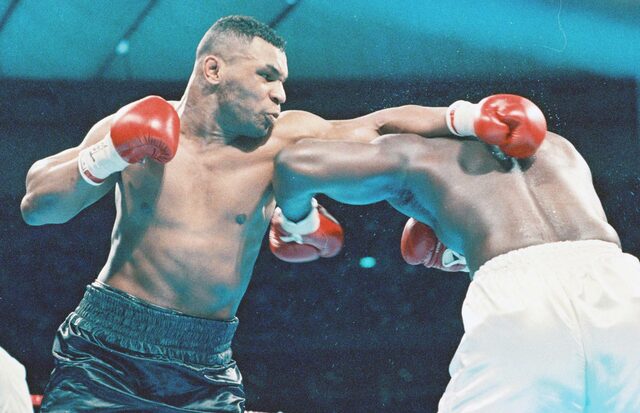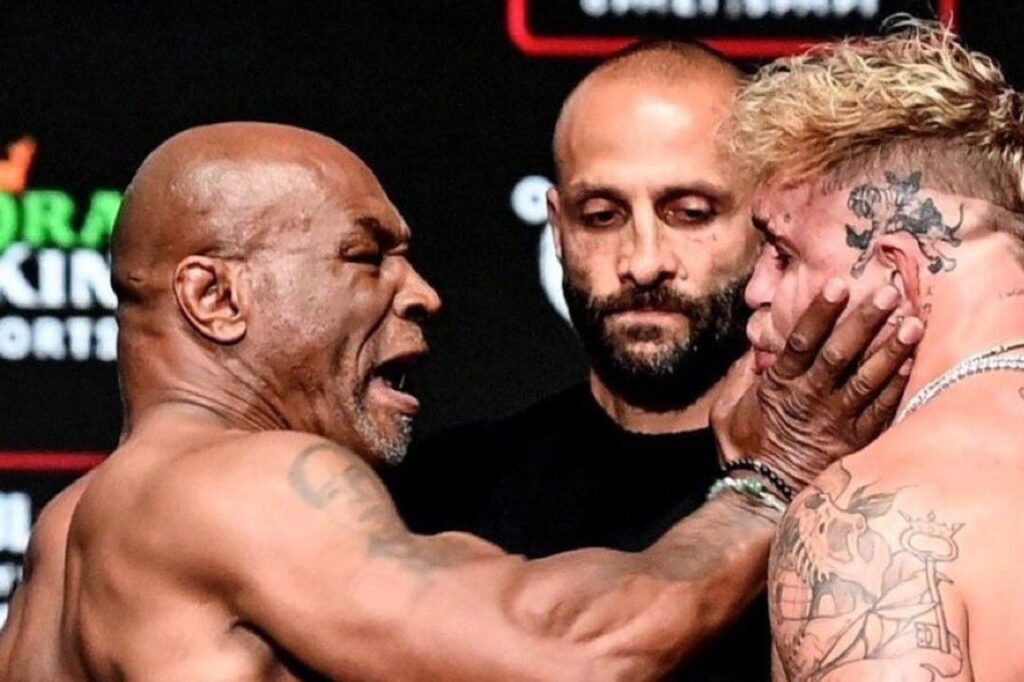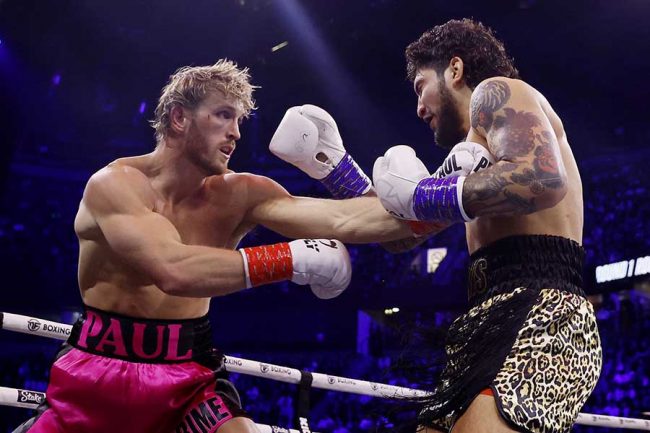
Super lightweight is a category in boxing that requires the most skill and speed.
Athletes in this weight class have the perfect balance of power and mobility, which requires practice and strategy.
In this article, we’ll cover the basics of super lightweight boxing, including some of the great fighters of the past, key strategies, and how to train for success.
Even if you’re not a boxing fan, you’ll appreciate how fascinating the super lightweight fights are and discover what to expect from the upcoming fights.
目次
- 1 What is super lightweight boxing?
- 2 Super lightweight athletes
- 3 Techniques for success at super lightweight
- 4 Super lightweight strategic fighting method
- 5 Representative matches in the super lightweight division and their analysis
- 6 Training and preparation at super lightweight
- 7 The future and prospects of super lightweight
What is super lightweight boxing?
There are various weight classes in boxing, but one of the categories that attracts the most attention is super lightweight.
Super lightweight, also known as junior welterweight, is a division in which athletes with a weight limit of up to 140 pounds (approximately 63.5 kilograms) compete.
This weight class is known for its matches that are an exquisite combination of power and speed, and is highly rated by boxing fans around the world because it requires a high level of skill and strategy.
Class definition and history
Super lightweight was established in 1946 as an official weight class by major boxing organizations such as the International Boxing Federation (IBF).
Originally named “Junior Welterweight”, many legendary fighters have since made their name in this division.
Super lightweight is a division between welterweight (up to 147 pounds) and lightweight (up to 135 pounds), and this weight division offers new challenges and opportunities for athletes.
Throughout its history, the super lightweight division has required a balance of technical skill and physical strength, resulting in many dramatic bouts.
Many athletes from this weight class later move up to welterweight or middleweight, and the super lightweight class also plays an important role as a stepping stone for the growth of athletes.
Features and charms of super lightweight
The biggest appeal of the super lightweight division is its dynamic match development.
The fighters maintain the speed of a lightweight, but have the power of a welterweight, so they are required to compete technically and physically.
Players in this weight class are generally highly skilled, characterized by quick footwork and accurate punching.
He is also skilled in defensive techniques, and can often be seen using tactics that skillfully avoid the opponent’s attacks while aiming for a counterattack.
These techniques make super lightweight fights very appealing to spectators.
This weight class is also extremely important as a stage for young players to challenge their limits and gain experience, and is a key place to find future champions.

Super lightweight athletes
The super lightweight division has produced many legendary boxers.
There is no doubt that throughout its history, athletes with particularly impressive performances have raised the prestige and competitive standards of the division.
Historic champions and their legacies
Some of the fighters who have made a name for themselves in the super lightweight division in the past include Julio Cesar Chavez, Kostaja Tzail, and Aaron Prior.
With his superior technique and power, Chavez defended his super lightweight title 11 times and set many records.
Zeil, on the other hand, has made 12 defenses, receiving particular praise for his precision punching and strategy.
Known for his quick movements and overwhelming aggression, Pryall has defended his super lightweight title eight times ( Sporting News ) ( fanrankings ) .
Today’s top players and their strategies
Some of today’s top players include Teofimo López, Josh Taylor, and Regis Prograis.
Lopez is particularly known for his hard-hitting power and tactical versatility, building an impressive record in the super lightweight division.
Taylor stands out for his well-rounded technique and solid defense, while Prograis is praised for his speed and precisely timed attacks ( Sporting News ) .
These fighters continue to fascinate many boxing fans today with their intense fights and strategic developments in the super lightweight ring.
Their skills and performance represent the unique appeal of this class, and will continue to attract a lot of attention.

Techniques for success at super lightweight
Success at super lightweight requires specific training methods and techniques.
Athletes in this weight class must have a combination of speed and power, and it is essential to practice to optimize that balance.
effective training methods
An effective training method for super lightweight athletes is to focus on strength training, improving endurance, and improving reaction speed.
First of all, strength training is important to strengthen your core.
This includes basic lifting techniques such as squats, deadlifts, and bench presses, but plyometric exercises are especially recommended for boxers to strengthen explosive movements.
Aerobic exercise such as running and swimming is effective for improving endurance.
This trains the body so that performance does not deteriorate even when fatigue accumulates during long matches.
Additionally, training with speed bags or double-ended bags can help improve reaction speed and timing.
These trainings are essential for improving your punching accuracy and speed.
punching and defense techniques
When it comes to punching techniques, there are basic punches such as jabs, straights, uppercuts, and hooks, but in the super lightweight class, the key is how quickly and accurately you can launch these punches.
The jab in particular is very important as it is used to measure distance and as a starting point for attacks.
Fighters use jabs to judge their opponent’s defense and look for opportunities to land effective strikes.
Defensive techniques include holding guard, dodging movements (slips), and ducking (crouching).
These techniques are necessary to effectively block your opponent’s attacks while creating counter opportunities.
Strategies such as rope-a-dope and clinch may also be used depending on the situation.
The combination of these training methods and techniques gives super lightweight fighters an edge in the ring and leads to success.
The key to a long-term career is for each player to train in a way that suits their style and strengths.

Super lightweight strategic fighting method
In super lightweight boxing, the key to success is not just good technique, but a strategic approach.
From match preparation to psychological warfare, every aspect affects a player’s performance, so understanding and applying these factors is critical.
Match strategy and planning
Strategic planning is very important in super lightweight matches.
In the pre-game preparation phase, players and coaches thoroughly analyze their opponent’s fighting style and come up with a plan to exploit their weaknesses.
This includes watching videos of your opponent’s past matches to learn their movements, preferred combinations, and reaction patterns.
Strategy also involves planning your pacing to make the most of your strength and stamina, and the longer the match, the better.
Part of the strategy is for fighters to tire out their opponents by being more aggressive or intentionally fighting defensively in certain rounds.
This kind of planned approach will help you make decisions during the match and ultimately contribute significantly to your victory.
The importance of psychological warfare
Psychological warfare plays a huge role in super lightweight fights.
During pre-game press conferences and weight-ins, players typically make strong statements and display confidence in order to put psychological pressure on their opponents.
This psychological warfare is used to shake the opponent’s confidence and gain a mental advantage before the match.
In addition, he may reduce his opponent’s concentration by acting in the ring, for example by deliberately lowering his defense to provoke him, or by repeatedly delivering powerful jabs.
In this way, it is possible to derail the opponent’s plans
Successful psychological warfare involves not only physical combat, but also controlling the opponent’s psychology, which can turn the flow of the match to your advantage.
Success in the super lightweight division thus requires a holistic approach that combines technical, strategic, and psychological factors.
When each aspect works well, an athlete can achieve maximum performance in the ring.

Representative matches in the super lightweight division and their analysis
The super lightweight division has produced many memorable matches, but we will analyze some of the most notable matches.
These bouts highlight tactical insight and fighter skill, providing great excitement for boxing fans.
Overview of historic matches
The Devin Haney vs. Regis Prograis match is one of the most anticipated fights in the super lightweight division.
It took place in San Francisco in December 2023, with Haney dominating Prograis to win the WBC super lightweight title.
In this bout, Haney perfectly deployed his technical superiority and strategic plan to win in a one-sided fight ( Al Jazeera ) ( SportsLine ) ( ProBoxing- Fans.com ) .
Match-by-match tactical analysis
In this fight, Haney showed an overwhelming performance, using his jab effectively from the beginning, especially in the third round, when he knocked down Prograis with a straight right.
His attacks were very calculated, especially his body strikes, and he continued to inflict severe damage on Prograis throughout the match.
Haney continued to apply pressure and strategically controlled the fight, with all the judges ultimately favoring him for the victory by a huge points margin.
Prograis struggled on defense and was unable to match Haney’s speed and accuracy.
This fight really demonstrates the tactical depth and importance of strategic preparation in the super lightweight division.
It can be argued that Haney’s technical sophistication and perfect psychological preparation for the match were the main factors that led him to victory.

Training and preparation at super lightweight
Success in the super lightweight division requires specialized training to improve your physical strength and stamina, as well as hone your technical skills.
This type of training is essential for maintaining high performance during long matches.
Improved physical strength and stamina
For super lightweight boxers, physical strength and stamina are the keys to maintaining performance even in the final stages of a match.
Cardio training such as running, cycling and swimming is recommended for this purpose.
These exercises improve your cardiovascular fitness and increase your endurance.
Interval training and high-intensity interval training (HIIT) are also effective.
This alternates high-intensity activity with short periods of rest to get your body used to maintaining high energy levels during the competition.
In addition, strength training is also important, especially core training, which contributes to improving punching power and balance.
How to hone your technical skills
Improving your technical skills requires daily training and proper guidance.
To hone your punching technique, practicing with heavy bags, speed bags, and double-ended bags is effective.
These exercises will help you improve your punching accuracy, speed, and sense of rhythm.
Sparring is also a great way to hone your skills in a way that is similar to real combat.
Through interactions with real opponents, you can learn the balance between attack and defense and improve your situational judgment skills.
When it comes to footwork, rope skipping and cone drills are effective, which will help you develop quick footwork and good body movement.
Combining these trainings allows super lightweight boxers to increase their technical proficiency and improve their competitiveness in matches.
It is also important to regularly review and adjust your training program to ensure it matches your current skill level and goals.

The future and prospects of super lightweight
Super lightweight is considered one of the most attractive categories in boxing due to its dynamic nature and intense competition.
This class will continue to attract a lot of attention due to its high level of technical sophistication and physical demands.
Class development and possibilities
Super lightweight is a weight class that requires skill and speed as important factors, and many legendary matches have been fought over the years.
Currently, technological advances are progressing in the boxing world, and super lightweight athletes in particular are trying to improve their performance by incorporating more scientific training methods and body building based on nutrition.
This allows athletes to stay competitive longer and improves the overall level of the weight class.
Additionally, with new talent entering the division from around the world and an increase in international competitions, we expect the sport to continue to develop on a global scale.
Advice and expectations for young players
In order for young athletes to succeed in the super lightweight division, it is important to hone their skills from the basics.
In addition to mastering the technical basics, you also need to develop strategic thinking.
For example, the ability to quickly analyze your opponent’s fighting style and choose the optimal strategy on the spot is essential to succeeding at the top level.
Mental strength is equally important, requiring you to remain calm under high-pressure situations.
I encourage young players to actively try out various matches and compete against players of many different styles in order to gain experience.
This increases their responsiveness and adaptability, giving them the potential to become the leading contenders in the super lightweight division in the future.
The future of the super lightweight division is bright, with the emergence of new stars and technological advances that will only further enhance the division’s appeal.
All eyes will be on how these young players will develop from now on, and what new techniques and tactics they will bring to the ring.




